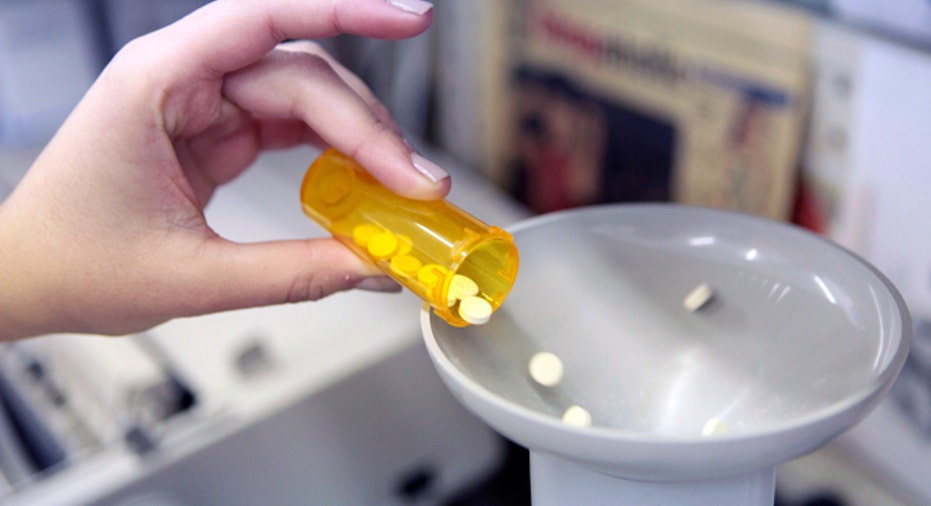Generic Drugs Are Cheaper, but Not Always Best Choice

If the rough economy pushed you to start buying generic brand drugs over the more expensive brand name, you are not alone. But do the cheaper versions do the same job?
According to the Food and Drug Administration, seven in ten prescriptions filled in the U.S. today are for generic drugs. IMS Institute for Healthcare Informatics recently released a report that found spending on brand-name medications declined 0.7% in 2010, whereas spending on generics, both branded and unbranded, rose 4.5% and 21.7% respectively.
And we’re not talking about saving just a few pennies when it comes to choosing the generic over the brand name.
In Michigan, for example, Blue Cross Blue Shield members can save greatly by purchasing generics over brand-name drugs. For a 30-day supply of Flomax, the brand name cost is $134.54 per month, where as the generic costs $45 – that’s almost a 75% discount. For a month's supply of Prozac, the brand name costs $136.52, where as the generic is only $3 – more than 95% worth of savings, according to February 2011 rates.
With savings like that, is there any reason not to buy the generic version?
The FDA requires generic drugs to have the same quality and performance as name-brand drugs, and their Web site cites research that found generics to work just as well as name-brand drugs. But they stop short of giving a prescription for always buying generic, saying that decision should be made between you and your doctor.
"The choice of medication is something a doctor and patient should discuss," FDA Spokesperson Sandy Walsh stated in an e-mail message. "The FDA does not regulate the practice of medicine, or the practice of pharmacy."
Generics are less costly not because they are inferior, the FDA says, but because generic manufacturers do not use advertising, marketing and promotion in the same way larger pharmaceutical companies do. They also do not do significant research and development.
"Consumers should feel confident in using FDA-approved generic drugs, which have met rigorous standards," Walsh said.
But Dr. George Shannon, board member of the American Academy of Family Physicians, said there is another major difference – besides price -- between generics and brand name prescriptions that matters specifically to patients taking hormone, heart or blood pressure medication. Generic drugs are only required to have between 75% and 125% bioavailability, or active drug in the bloodstream, whereas brand names must have 100% bioavailability at all times. According to Dr. Shannon, that fluctuation in generics may affect how the medication works for consumers.
"Yes, there are some reasons to stick with the brand name, it is more consistent in bioavailability," Dr. Shannon said. "For a penicillin or Tylenol, it doesn't really matter, but for thyroid pills, high blood pressure medications or heart medications, [those] are three consistent cases where you want to stick with the brand name."
Shannon said patients should also take note when using generics, of the size, shape and color of the pill, which may vary from manufacturer to manufacturer. Brand name drugs have one staple look, and can be less confusing to consumers, he said.
"It's important to have help from your family physician and pharmacist, when deciding which type of prescription to take," he said. "I think that people are concerned with how the drug works, but pricing is a huge factor.”
Michael Kleinrock, director, Research Development at IMS, agreed there are some cases when a consumer should stick with the brand name, especially when a generic is not directly substitutable for a medication. But when this is not the case, he said going with the cheaper version can be an equal substitute.
"There are definitely cases where particularly in therapy areas, there was a difference in medications and a generic was not directly substitutable," Kleinrock said. "But really, when there is a generic available that is considered to be directly substitutable, there is really only the financial concern. There are high quality generics being produced all the time."
Generics are permitted to enter the market and compete with brand-name drugs once the brand-names come off patents. According to IMS, within six months of patent loss, more than 80% of a brand's prescription volume is replaced by generics.
"Generic drugs are important options that play a vital role in affordable access to health care," Walsh said. "The FDA has made it a priority to make generics available as soon as the law will allow, which is bringing more and more generics to the marketplace."
And consumers are taking advantage, Kleinrock said.
"It’s a tough economy out there—[the] 93% of the time a generic can be dispensed, it is," he said. "That is an increasing trend, where people are taking advantage of generics when they can."